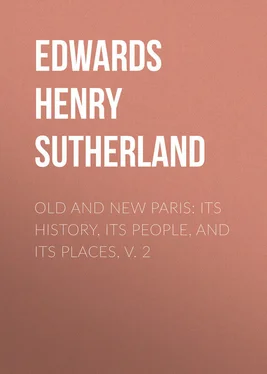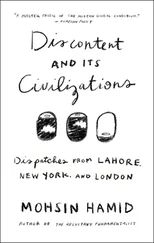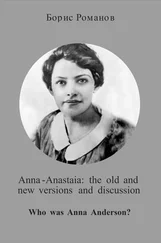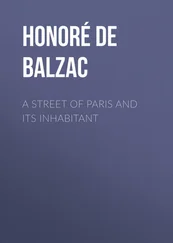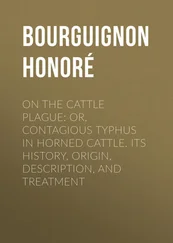Henry Edwards - Old and New Paris - Its History, Its People, and Its Places, v. 2
Здесь есть возможность читать онлайн «Henry Edwards - Old and New Paris - Its History, Its People, and Its Places, v. 2» — ознакомительный отрывок электронной книги совершенно бесплатно, а после прочтения отрывка купить полную версию. В некоторых случаях можно слушать аудио, скачать через торрент в формате fb2 и присутствует краткое содержание. Жанр: foreign_antique, foreign_prose, Путешествия и география, на английском языке. Описание произведения, (предисловие) а так же отзывы посетителей доступны на портале библиотеки ЛибКат.
- Название:Old and New Paris: Its History, Its People, and Its Places, v. 2
- Автор:
- Жанр:
- Год:неизвестен
- ISBN:нет данных
- Рейтинг книги:4 / 5. Голосов: 1
-
Избранное:Добавить в избранное
- Отзывы:
-
Ваша оценка:
- 80
- 1
- 2
- 3
- 4
- 5
Old and New Paris: Its History, Its People, and Its Places, v. 2: краткое содержание, описание и аннотация
Предлагаем к чтению аннотацию, описание, краткое содержание или предисловие (зависит от того, что написал сам автор книги «Old and New Paris: Its History, Its People, and Its Places, v. 2»). Если вы не нашли необходимую информацию о книге — напишите в комментариях, мы постараемся отыскать её.
Old and New Paris: Its History, Its People, and Its Places, v. 2 — читать онлайн ознакомительный отрывок
Ниже представлен текст книги, разбитый по страницам. Система сохранения места последней прочитанной страницы, позволяет с удобством читать онлайн бесплатно книгу «Old and New Paris: Its History, Its People, and Its Places, v. 2», без необходимости каждый раз заново искать на чём Вы остановились. Поставьте закладку, и сможете в любой момент перейти на страницу, на которой закончили чтение.
Интервал:
Закладка:
But in this part of the museum the glass cases contain innumerable specimens of the religious work of the Middle Ages. Among the curios of the thirteenth century may be cited a large cross adorned with filigree work and precious stones in relief. This was one of the treasures of the Soltykoff collection. Nuremberg is represented by the shrine of Saint Anne, executed in 1472 by Hans Grieff. The flesh of the figure is painted. From the same epoch may be dated the “Crossbow Prize,” an admirable piece of smith’s work in wrought silver, chased and gilt. As the works of the sixteenth century, we find a large mechanical piece, more singular than beautiful, in the form of a vessel on which, among the personages in enamelled gold, grouped around the steering apparatus, may be recognised Charles V. in the midst of a crowd of high dignitaries of the Imperial Court. A mechanism concealed within the ship makes the figure move, musical instruments play, and cannons roar. The museum possesses also, in a mixed style, belonging at once to art and science, clocks and watches of the Renascence and of the seventeenth century. Nor must the visitor pass by the famous basin of François Briot, made in pewter with an artistic taste which would not be thrown away on the finest gold. The iron-work consists chiefly of Gothic locks and bolts, once attached to the doors and gates of feudal mansions. Here, too, are the keys, finely worked, of the Château Anest, which Diana of Poitiers may well have touched with her delicate hand. The Hôtel Cluny is famous, moreover, for its collection of ancient arms: Toledo blades of tragic aspect, bearing the names of the great burnishers of the time; armour of war or of parade, carved and damasked by the artificers of Milan; helmets, pikes, muskets, shields; all the formidable instruments of attack with all the ingenious instruments of defence. In the armoury of the Hôtel Cluny may likewise be seen some fine specimens of Oriental work; though the finest creations of this special art are preserved, not at the Hôtel Cluny, but at the Museum of Artillery.
The masterpieces in wax-work will next demand our attention; and here Italy, which in almost every other art has the right to pass first, may perhaps be asked to give precedence to Spain. The Spanish-Moorish specimens are above all admirable. As for the Italian works, they are very numerous, and for the most part well chosen. Apart from the medallions of Lucca della Robbia, which belong to sculpture as much as to waxwork, the plates suspended on the walls, the cups enclosed beneath the glass, are all interesting, and are nearly all of Italian make. A product from the workshops of Faenza, which, in France, gives its name to crockery in general ( faience ), adorned with the monogram of Christ in Gothic characters, bears the date of 1475. The work is quite archaic; but Faenza can also show plates and cups which tell of the progress and also of the decadence of this centre of a special art, so active in the sixteenth century. Urbino, the birthplace of Raphael, and Pesaro, the birthplace of Rossini, are also represented, together with Rimini, Caffagiolo, Castel-Durante, and, above all, Gubbio, with the masterpieces of its illustrious potter, Giorgio Andreoli. The word seems appropriate when one contemplates the fine plate representing Dædalus, dated 1533, and the two cups relieved with gold, on which smile, from a rainbow-tinted background, two charming women: “Angela Bella,” “Dianara Bella.” These cups, which now form the admiration of artists, served formerly to receive the presents made by the lover to his mistress. Superb types of the Gubbio work in the sixteenth century are as bright and pure as if they had come yesterday from the hands of the potter. French pottery is also conspicuous at the Hôtel Cluny, both in its ancient and in its modern glory. Specimens of enamelled terracotta, dating from the thirteenth century, are first to be seen. Then one remarks a cup decorated with arabesques encrusted in brown on a whitish ground. These famous styles of pottery used to be vaguely connected with the name and period of Henry II.; but they are at present known to have been made at Oiron, in Poitou, by François Cherpentier, the humble workman of Madame de Boisy.
The Hôtel Cluny contains many of the best works of Bernard Palissy, the famous artist whose life was a long martyrdom and, for his wife, it must be feared, a long torture; for if it was noble on the part of the husband to sacrifice the household furniture to the perfection of an art to which he was devoted, it must have been painful for the perhaps less enthusiastic wife to hear it crackling within his furnaces. In seeking to determine which of the numerous alleged specimens of this artist’s work really belong to him, connoisseurs have been aided by Time, which, destroying the imitations, seems to have preserved the genuine ones alone. Even the charming little figure of the Nurse, for a long time attributed to Palissy, is now said to be from another and later hand. Nevers, Rouen, Moustiers, and the various centres of French pottery, are worthily represented at the Hôtel Cluny, either by isolated pieces or by groups, and even entire collections.
The stained glass at the Hôtel Cluny is for the most part of Swiss or of German origin. The enamels are of every country and every age. Nine enamelled plates of exceptionally large dimensions were painted by Pierre Courtoys in 1559 for the Château de Madrid, in the Bois de Boulogne. The figures – the largest, perhaps, that were ever executed in enamel – represent Justice, Charity, Prudence, and six other mythological divinities, more astonishing than attractive. A remarkable triptych, or picture with shutters, whose painter is unknown, but which belonged to Catherine de Médicis, represents on the central panel the queen on her knees, in widow’s dress, before a crucifix. Her initials, with those of Henry II., adorn this curious relic. Close by are enamelled cups and plates by Pierre Rémond, Nardon Penicaud, and Jean Courtoys, with many works, justly esteemed, by the great enameller Leonard Limousin, remarkable among these being a fine portrait of Eleonora of Austria, sister of Charles V. and Francis I.
The piece of Florentine mosaic in the first hall of the museum ought not to pass unnoticed. It has been described by Vasari; and the Virgin and Child which it represents are the genuine work of Ghirlandaio. Executed at Florence in 1496, it was brought to France by Jean de Ganay, President of the Parliament of Paris. The works of this famous mosaist are now very rare. The one preserved at the Hôtel Cluny is relatively in sound condition, and gives a good idea of the great mosaics which adorned the churches of Tuscany.
The Cluny Museum has no claim to be considered a picture-gallery. It contains, however, a certain number of canvases, illustrating the manners, the costumes, or the furniture of particular periods. The best critics deny that the Jesus in the Garden of Olives is the work of Gentile di Fabriano, to whom the catalogue attributes it. Nor, according to competent judges, is the hand of Primaticcio to be recognised in that Venus who, standing by the side of Love, faces the spectator smiling, and with an arrow in her hand. The painting is marked by delicacy and refinement; but the style is not that of Primaticcio, nor does the face of Venus reproduce the features of Diana of Poitiers, who, according to some keen-sighted observers, is everywhere to be seen. A more genuine interest is inspired by a few pictures of the fifteenth century, some of Flemish, others of French origin. Very curious is the Mary Magdalen attributed to King René. The repentant sinner is grieving in the midst of a landscape whose background represents the city of Marseilles. Another picture well worthy of notice is one which represents two pictures in the same frame; on the one is represented the coronation of David, on the other the coronation of Louis XII. The author of this work is unknown, but the period is marked by the date of Louis XII.’s coronation (1498); and it is presumable that the painter was some artist of distinction attached to the Court. He was in any case a man of ability, with a certain feeling for colour.
Читать дальшеИнтервал:
Закладка:
Похожие книги на «Old and New Paris: Its History, Its People, and Its Places, v. 2»
Представляем Вашему вниманию похожие книги на «Old and New Paris: Its History, Its People, and Its Places, v. 2» списком для выбора. Мы отобрали схожую по названию и смыслу литературу в надежде предоставить читателям больше вариантов отыскать новые, интересные, ещё непрочитанные произведения.
Обсуждение, отзывы о книге «Old and New Paris: Its History, Its People, and Its Places, v. 2» и просто собственные мнения читателей. Оставьте ваши комментарии, напишите, что Вы думаете о произведении, его смысле или главных героях. Укажите что конкретно понравилось, а что нет, и почему Вы так считаете.
